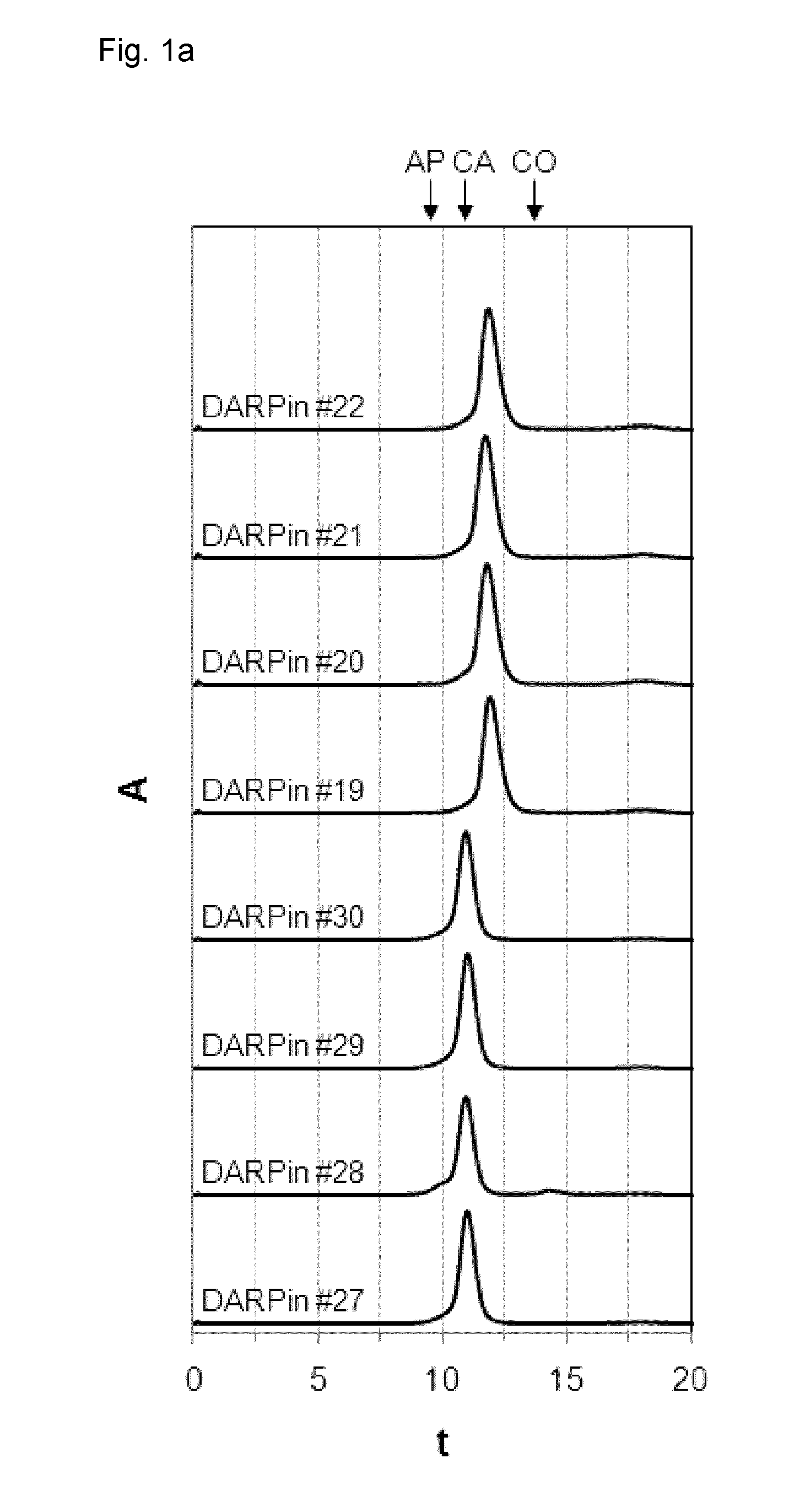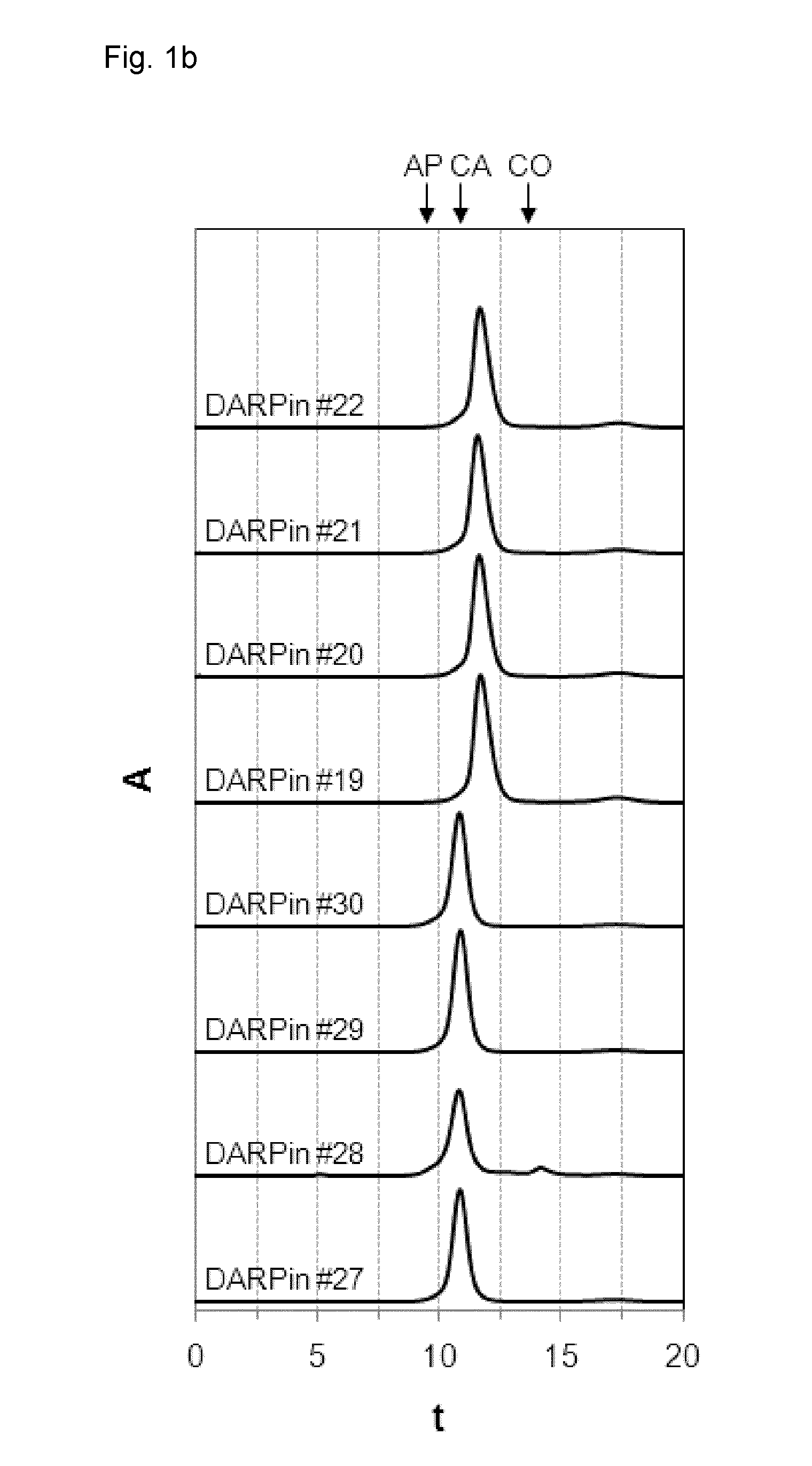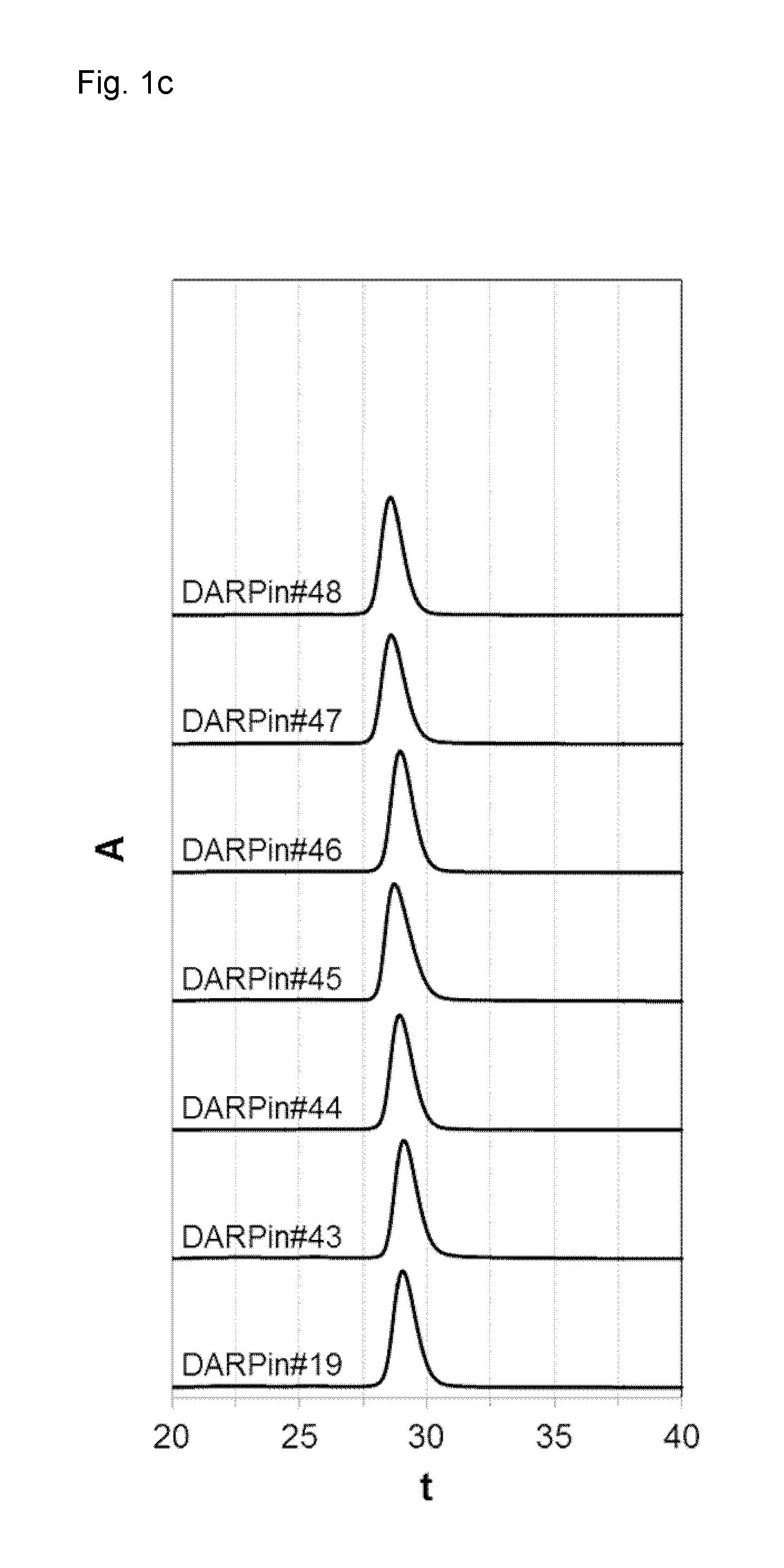Designed repeat proteins binding to serum albumin
a technology of designed repeats and serum albumin, which is applied in the direction of polypeptides with his-tags, peptides, drug compositions, etc., can solve the problems of complex modulation of pk and/or pd of molecules by hijacking sa, unsatisfactory understanding of the modulation of pk and/or pd of molecules, and the inability to achieve the effect of sa targeting pk and/or pd,
- Summary
- Abstract
- Description
- Claims
- Application Information
AI Technical Summary
Benefits of technology
Problems solved by technology
Method used
Image
Examples
example 1
Selection of Binding Proteins Comprising a Repeat Domain with Binding Specificity for xSA
[0203]Using ribosome display (Hanes, J. and Plückthun, A., PNAS 94, 4937-42, 1997) many designed ankyrin repeat proteins (DARPins) with binding specificity for xSA were selected from the N2C or N3C DARPin libraries described by Binz et al. 2004 (loc. cit.). The binding of the selected clones toward specific (xSA; i.e. MSA, HSA or CSA) and unspecific (MBP, E. coli maltose binding protein) targets was assessed by crude extract ELISA indicating that xSA binding proteins were successfully selected. The repeat domains of SEQ ID NO:17 to 31 constitute amino acid sequences of selected binding proteins comprising a repeat domain with binding specificity for xSA. Sequence analysis of selected binders revealed specific ankyrin repeat sequence motifs inherent to certain selected families of binders. Such ankyrin repeat sequence motifs present in repeat domains with binding specificity for xSA are provided ...
example 2
Stability Analysis and Size Exclusion Chromatography of DARPins with Binding Specificity for xSA
[0208]DARPins #19 to 22 and DARPins #27 to 30 with binding specificity for xSA were purified to near homogeneity using their His-tag as described above and stored in PBS for 28 days at 30 mg / ml (˜2 mM) at 40° C. (stability study). At day 0 (FIG. 1a) and day 28 (FIG. 1b) samples were taken, diluted to 500 μM and analyzed by size exclusion chromatography (SEC) to assess their apparent molecular weight and stability (i.e. their aggregation, multimerization or degradation tendency) over time.
[0209]In a further experiment (FIG. 1c), DARPins #19 and 43 to 48 with binding specificity for xSA were purified to near homogeneity using their His-tag as described above and stored in PBS for 28 days at around 100 mg / ml at −80° C., diluted to 500 μM and analyzed by size exclusion chromatography (SEC) for characterization (i.e. their aggregation, multimerization or degradation tendency). Notably, a large...
example 3
Thermal Stability of DARPins with Binding Specificity of xSA
[0212]Thermal stability of DARPins with specificity for xSA was analyzed with a fluorescence-based thermal stability assay (Niesen, F. H., Nature Protocols 2(9): 2212-2221, 2007). Thereby, the temperature at which a protein (i.e. such a DARPin) unfolds is measured by an increase in the fluorescence of a dye (e.g. SYPRO orange; Invitrogen, cat. No. S6650) with affinity for hydrophobic parts of the protein, which are exposed as the protein unfolds. The temperature at the thereby obtained fluorescence transition midpoint (from lower fluorescence intensity to higher fluorescence intensity) then corresponds to the midpoint denaturation temperature (Tm) of the protein analyzed.
Fluorescence-Based Thermal Stability Assay
[0213]Thermal denaturation of DARPins using SYPRO orange as a fluorescence dye was measured using a real time PCR instrument (i.e. the C1000 thermal cycler (BioRad) in combination with a CFX96 optical system (BioRad...
PUM
| Property | Measurement | Unit |
|---|---|---|
| molecular weight | aaaaa | aaaaa |
| molecular weight | aaaaa | aaaaa |
| molecular mass | aaaaa | aaaaa |
Abstract
Description
Claims
Application Information
 Login to View More
Login to View More - R&D
- Intellectual Property
- Life Sciences
- Materials
- Tech Scout
- Unparalleled Data Quality
- Higher Quality Content
- 60% Fewer Hallucinations
Browse by: Latest US Patents, China's latest patents, Technical Efficacy Thesaurus, Application Domain, Technology Topic, Popular Technical Reports.
© 2025 PatSnap. All rights reserved.Legal|Privacy policy|Modern Slavery Act Transparency Statement|Sitemap|About US| Contact US: help@patsnap.com



